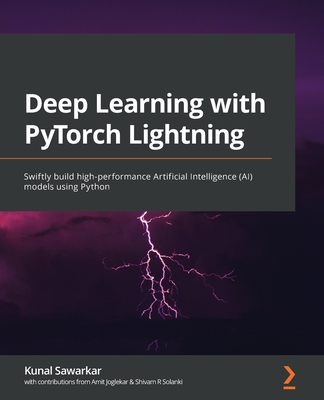Advanced Macromedia ColdFusion 5 Application Development, 2/e (Paperback)
暫譯: 進階 Macromedia ColdFusion 5 應用程式開發,第2版 (平裝)
Ben Forta, Shawn Evans, Benjamin Elmore, Dain Anderson, Nate Weiss, Jeff Tapper, Robert Panico, David Krasnove, Emily B. Kim, Paul Hastings
- 出版商: QUE
- 出版日期: 2001-09-17
- 售價: $2,040
- 貴賓價: 9.5 折 $1,938
- 語言: 英文
- 頁數: 1152
- 裝訂: Paperback
- ISBN: 0789725851
- ISBN-13: 9780789725851
已過版
買這商品的人也買了...
-
 $399ColdFusion 5 Web Application Construction Kit, 4/e (Paperback)
$399ColdFusion 5 Web Application Construction Kit, 4/e (Paperback) -
 $399Core ColdFusion 5 (Paperback)
$399Core ColdFusion 5 (Paperback) -
 Inside ColdFusion MX (Paperback)
Inside ColdFusion MX (Paperback)$2,110$2,005 -
 Advanced Macromedia ColdFusion MX Application Development, 3/e (Paperback)
Advanced Macromedia ColdFusion MX Application Development, 3/e (Paperback)$2,240$2,128 -
 ASP.NET 程式設計徹底研究
ASP.NET 程式設計徹底研究$590$466 -
 Linux 網路程式設計 ( Linux Socket Programming)
Linux 網路程式設計 ( Linux Socket Programming)$550$435 -
 重構─改善既有程式的設計
重構─改善既有程式的設計$720$569 -
 C# Primer Plus 中文版 (C# Primer Plus)
C# Primer Plus 中文版 (C# Primer Plus)$680$537 -
 Dreamweaver MX 2004 魔法書中文版
Dreamweaver MX 2004 魔法書中文版$490$417 -
 802.11 完全剖析無線網路技術
802.11 完全剖析無線網路技術$620$484 -
 專案管理實務入門-引導專案成功的52條準則
專案管理實務入門-引導專案成功的52條準則$280$218 -
 人月神話:軟體專案管理之道 (20 週年紀念版)(The Mythical Man-Month: Essays on Software Engineering, Anniversary Edition, 2/e)
人月神話:軟體專案管理之道 (20 週年紀念版)(The Mythical Man-Month: Essays on Software Engineering, Anniversary Edition, 2/e)$480$379 -
 JSP 2.0 技術手冊
JSP 2.0 技術手冊$750$593 -
 Introduction to Electronics, 4/e
Introduction to Electronics, 4/e$950$931 -
 領導的 24 堂必修課 (Rules & Tools for Leaders)
領導的 24 堂必修課 (Rules & Tools for Leaders)$330$281 -
 Struts 333個應用範例技巧大全集
Struts 333個應用範例技巧大全集$590$460 -
 Sniffer Pro 網路最佳化與故障排除手冊
Sniffer Pro 網路最佳化與故障排除手冊$580$452 -
 SCWCD 認證專家應考指南, 2/e
SCWCD 認證專家應考指南, 2/e$790$672 -
 A Guide To The Project Management Body Of Knowledge, 3/e (Paperback)
A Guide To The Project Management Body Of Knowledge, 3/e (Paperback)$1,590$1,511 -
 寫給 SA 的 UML/MDA 實務手冊
寫給 SA 的 UML/MDA 實務手冊$350$298 -
 系統分析與設計 (Whitten: Systems Analysis and Design for the Global Enterprise, 7/e)
系統分析與設計 (Whitten: Systems Analysis and Design for the Global Enterprise, 7/e)$700$686 -
 ADO.NET 2.0 實戰講座
ADO.NET 2.0 實戰講座$690$587 -
 C++ Primer Plus, 5/e 中文豪華版
C++ Primer Plus, 5/e 中文豪華版$650$514 -
 C++ Primer, 4/e (中文版)
C++ Primer, 4/e (中文版)$990$891 -
 專案管理知識體指南, 3/e (A Guide to the Project Management Body of Knowledge, 3/e)
專案管理知識體指南, 3/e (A Guide to the Project Management Body of Knowledge, 3/e)$1,200$1,140
商品描述
Much of Advanced Macromedia ColdFusion 5 Application Development is a discussion of technologies and ideas with examples to demonstrate specific techniques. The book also contains case studies to illustrate real-world examples of specific topics. ColdFusion 5 is a massive upgrade, and it adds lots of new features, including some designed specifically for advanced and power users. This book addresses these issues and technologies, including
Table of Contents
Introduction.
I. CREATING HIGH-AVAILABILITY APPLICATIONS.
1. Understanding High Availability.
2. Monitoring System Performance.
3. Different Ways to Scale.
4. Software-Based Load Balancing.
5. Hardware-Based Load Balancing.
6. Managing Session State in Clusters.
II. ENSURING SECURITY.
7. Understanding Security.
8. ColdFusion Security Options.
9. Implementing Advanced Security.
10. Security in Shared and Hosted Environments.
III. ADVANCED APPLICATION DEVELOPMENT.
11. ColdFusion Scripting.
12. Using Regular Expressions.
13. Creating Intelligent Agents.
14. XML Development.
15. Using WDDX.
16. Advanced WDDX Integration.
17. Interacting with Directory Services.
18. Internationalization and Localization.
IV. EXTENDING COLDFUSION.
19. Creating Advanced Custom Tags.
20. Creating User-Defined Functions.
21. Extending ColdFusion with COM.
22. Extending ColdFusion with CORBA.
23. Extending ColdFusion with Java.
24. Extending ColdFusion with CFX.
25. Writing ColdFusion Studio Tag Extensions.
26. Scripting ColdFusion Studio.
V. APPENDIXES.
Appendix A. VTML and WIZML Language Reference.
Appendix B. ColdFusion Studio Object Model Reference.
Appendix C. The WDDX DTD.
Index.
商品描述(中文翻譯)
《進階 Macromedia ColdFusion 5 應用程式開發》大部分內容是對技術和理念的討論,並提供範例來展示特定技術。這本書還包含案例研究,以說明特定主題的實際範例。ColdFusion 5 是一次重大的升級,新增了許多功能,包括一些專為進階和高效能使用者設計的功能。本書針對這些問題和技術進行探討,包括:
- 使用叢集和故障轉移技術以確保伺服器正常運行
- 使用新的存檔和還原功能
- 伺服器監控和基準測試
- 創建安全應用程式並與現有安全系統整合
- 編寫自定義標籤和函數
- 使用 XML 和 XSL
**目錄**
**導言。**
誰應該使用這本書?如何使用這本書。
I. 創建高可用性應用程式。
1. 理解高可用性。
高可用性解釋。如何判斷伺服器負載?高可用性計畫:建立高可用性的六大必備條件。解決方案。關於網頁託管的一些真相。主動網站監控。服務質量保證。
2. 監控系統性能。
理解性能。監控你的 ColdFusion 伺服器。設置預設探測器以驗證內容。理解性能。為什麼要監控性能?在 Unix 和 Linux 伺服器上監控性能。決定下一步該做什麼。使用 SNMP。
3. 不同的擴展方式。
第一部分:理解擴展問題。第二部分:選擇負載平衡解決方案。
4. 基於軟體的負載平衡。
理解 ClusterCATS。
5. 基於硬體的負載平衡。
為什麼要投資於基於硬體的負載平衡?兩種硬體負載平衡器。硬體負載平衡的工作原理。更多關於演算法的資訊。在 ColdFusion 中整合 LocalDirector。使用 ColdFusion 管理員管理網頁伺服器流量。使用 ClusterCATS Explorer 管理你的 LocalDirector。網路工程師的巨大 Megaproxy 頭痛。實施其他硬體負載平衡解決方案。使用負載平衡以確保業務連續性。
6. 在叢集中管理會話狀態。
什麼是客戶端狀態?嵌入在 URL 或 FORM 發送中的資訊。Cookies。情境。
II. 確保安全性。
7. 理解安全性。
安全風險。ColdFusion 和安全性。在伺服器上啟用 SSL。身份驗證和授權。訪問控制。總結。
8. ColdFusion 安全選項。
基本安全性與進階安全性。依賴於網頁伺服器或作業系統。
9. 實施進階安全性。
你需要進階安全性嗎?什麼是 SiteMinder?定義安全上下文。創建規則。用戶目錄選項。創建政策。將進階安全性應用於外部網路情境。使用 驗證用戶對定義的用戶目錄的身份。整合。
10. 在共享和託管環境中的安全性。
安全風險。沙盒。保護遠端開發服務。無 DSN 的資料庫連接。其他問題。
III. 進階應用程式開發。
11. ColdFusion 腳本。
理解 。使用 。不支援的標籤和函數。常見錯誤及解決方案。創建自己的函數。
12. 使用正則表達式。
理解正則表達式。使用 RE 函數。正則表達式基礎。實際使用。
13. 創建智能代理。
概述。。使用 標籤。使用 創建智能代理。。使用 標籤。
14. XML 開發。
XML 概述。XML 文件。驗證 XML 文件。在應用程式中利用 XML。ColdFusion 與 XML。
15. 使用 WDDX。
介紹 WDDX。WDDX 格式:它是 XML!WDDX 和 ColdFusion。WDDX 和 JavaScript。
16. 進階 WDDX 整合。
Macromedia 的 WDDX COM 介面。與 Active Server Pages 整合。與 Visual Basic 整合。與 Office 應用程式整合。使用 JavaScript 直接獲取 WDDX 封包。WDDX SDK 中的其他資源。
17. 與目錄服務互動。
理解 LDAP。使用 。查詢公共 LDAP 伺服器。與目錄互動。
18. 國際化和本地化。
為什麼要進行國際化和本地化?主要問題是什麼?什麼是國際化?什麼是本地化?本地化/國際化涉及什麼?UNICODE。資料庫問題。Verity 問題。地區函數。如果你的地區不被 ColdFusion 支援該怎麼辦?創建多語言應用程式。
IV. 擴展 ColdFusion。
19. 創建進階自定義標籤。
回顧簡單的 CFML 自定義標籤。理解嵌套自定義標籤。使用 ThisTag 範圍。創建標籤家族。介紹 。使嵌套自定義標籤靈活。動態填充自定義標籤。總結 。保護你的標籤。
20. 創建用戶定義函數。
理解 UDF。創建 UDF。UDF 語法。將函數作為參數傳遞。UDF 限制。UDF 的注意事項。
21. 使用 COM 擴展 ColdFusion。
理解 COM。 概述。使用 COM。與流行應用程式整合。
22. 使用 CORBA 擴展 ColdFusion。
CORBA 介紹。CORBA 的工作原理。配置 ColdFusion 以與 CORBA 一起工作。在 ColdFusion 中使用 CORBA。
23. 使用 Java 擴展 ColdFusion。
ColdFusion 和 Java。介紹 Java。基本 Java 概念。在 ColdFusion 管理員中管理 Java 設定。使用 標籤調用 Java Servlet。使用 標籤調用 JRun Servlet。調用 Java 對象。使用 標籤調用 Enterprise JavaBeans。
24. 使用 CFX 擴展 ColdFusion。
什麼是 CFX 標籤?使用 C++ API。構建你的第一個 C++ CFX 標籤:CFX_ListRemoveDuplicates。使用 CD-ROM 上的「宏」縮短你的源代碼。構建你的第二個 CFX 標籤:CFX_QueryAddColumn。使用 Java API。創建你的第一個 Java CFX 標籤:CFX_JavaRemoveDup。在 ColdFusion 管理員中編輯標籤設置。
25. 編寫 ColdFusion Studio 標籤擴展。
關於 VTML。創建標籤定義。創建標籤編輯器對話框。創建向導。加速 VTML 開發的資源。
26. 腳本化 ColdFusion Studio。
關於 Studio 和腳本。編寫 VTOM 腳本。超越 VTOM 的腳本。
V. 附錄。
附錄 A. VTML 和 WIZML 語言參考。
使用 VTML 和 WIZML。
附錄 B. ColdFusion Studio 物件模型參考。
ActiveDocument 物件。Application 物件。DeploymentManager 物件。DocumentCache 物件。HTTPProvider 物件。ZipProvider 物件。
附錄 C. WDDX DTD。索引。


















